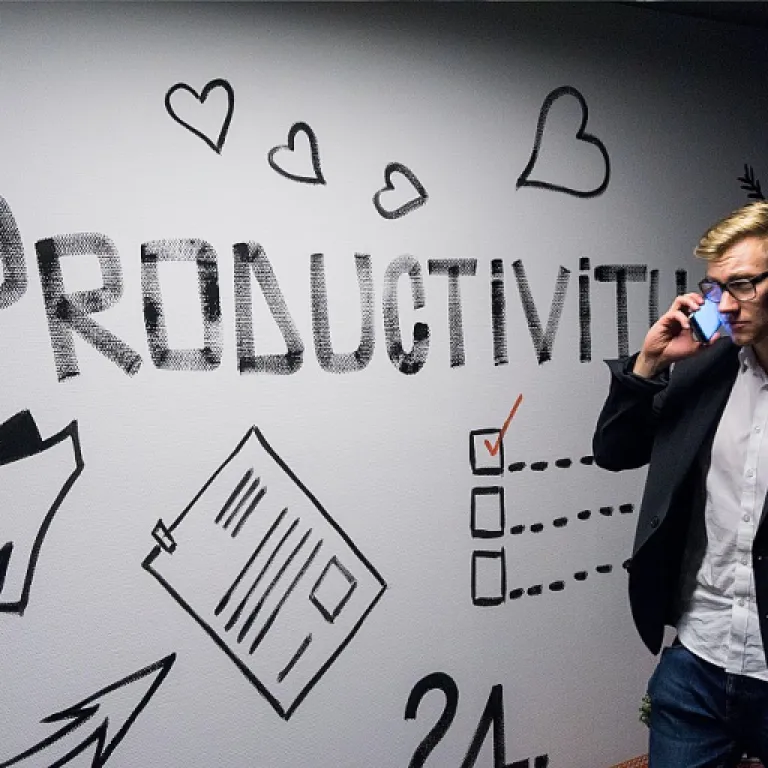
The Subtle Signs of Favoritism
Recognizing the Telltale Indicators
In the workplace, favoritism can manifest in various subtle ways, and recognizing these signs is crucial for both management and employees. Favoritism, sometimes referred to as preferential treatment, often flies under the radar, but its impact on teamwork and employee morale can be profound. One major sign of favoritism is the unequal distribution of opportunities. When certain employees consistently receive more advantageous projects, plum assignments, or frequent promotions, it raises questions about fairness. This disparity can lead to feelings of resentment among team members who feel slighted or overlooked. Everyone on the team should be given a chance to grow and showcase their capabilities, but when favoritism infiltrates a work environment, it skews the playing field. Moreover, subtle forms of communication, such as body language and tone, can also reveal favoritism. Managers might unknowingly lean towards certain employees during meetings, offering them more time, attention, or support. It's important to note that such treatment can have long-lasting effects on morale and productivity. Preferential treatment might not always be intentional. In some cases, managers and leaders may not realize they are practicing favoritism, which can lead to a form of discrimination. Whether it's based on age, gender, or other factors, such discrimination is both illegal and detrimental to a cohesive work environment. Addressing these issues head-on can help mitigate favoritism at work. Leveraging resources such as engaging virtual team-building activities can foster a more inclusive culture. By promoting transparency and fairness, leaders can help ensure that all employees feel valued and respected, leading to better employee retention. Understanding the signs of favoritism is the first step towards creating a balanced workplace where every team member can thrive. It requires a proactive approach and a commitment to equity from both leadership and team members alike.The Ripple Effect on Employee Retention
Consequences on Workforce Stability
Favoritism in the workplace can have a significant impact on employee retention, manifesting in various subtle and direct ways. When preferential treatment is perceived, whether it is through promotions or day-to-day managerial decisions, it can create a sense of discrimination and imbalance among the team. This perception can lead to several ripple effects that undermine the stability and cohesion of the workforce. Firstly, favoritism causes employees to feel slighted and unappreciated, leading to dissatisfaction and demotivation. When some team members consistently receive more favorable assignments, opportunities, or promotions, others might feel their efforts are undervalued. This experience is often accompanied by a perception of illegal discrimination or gender discrimination, even if unintentional, posing a risk to workplace harmony. Moreover, favoritism can disrupt team dynamics. When employees notice the signs of favoritism, such as a manager’s tendency to consistently side with or praise certain members, a divide may form. This can result in friction among members of the team, reducing teamwork and cooperation which are essential for achieving organizational goals. In terms of retention, employees who feel discriminated against or overlooked might consider searching for employment elsewhere. The choice to leave FMLA or pursue other family medical leave options can also become appealing as employees weigh their mental health amid a discriminatory work environment. Over time, this leads to increased turnover, requiring management to continually replace skilled workers, thus impacting productivity. To address favoritism and its repercussions on employee retention, companies must develop effective systems to monitor and correct any signs of preferential treatment. Installing transparent practices and engaging employee-focused systems can also be crucial. Organizations can enhance retention by enhancing employee experience through seamless login systems, ensuring that all employees can effortlessly access resources and opportunities for advancement. Addressing favoritism in the workplace is essential not only to protect against age discrimination and pregnancy discrimination claims but also to cultivate a supportive work environment where all employees can thrive equally. By fostering an inclusive culture and fair treatment for all, companies can promote loyalty and long-term retention.Psychological Impact on Employees
The Emotional and Psychological Costs of Favoritism
In the workplace, the weight of favoritism can have profound emotional and psychological impacts on employees. This issue is not just about unequal practices or unfair advantages in promotions. It is a deeper issue that erodes the very fabric of team dynamics, resulting in a work environment overshadowed by favoritism discrimination.
Employees treated unfairly, witnessing preferential treatment toward others, often struggle with feelings of inadequacy and diminished self-worth. This discrimination can lead to employees feeling isolated and detached from their work, as their contributions go unnoticed while others bask in unwarranted recognition.
Moreover, the mental health of an affected employee can deteriorate over time. Constant exposure to workplace favoritism can induce stress and anxiety, potentially causing members of the team to consider leaving their position. Some might even face medical issues, necessitating family medical leave as a respite.
The damaging effects of favoritism are not confined to the individuals feeling slighted. The broader team will suffer as morale dips, leading to a decrease in productivity and an increase in turnover. Employees may lose trust in management, creating divisions within the team that further harm the organizational culture.
Understanding these psychological impacts is crucial for management and HR professionals. It draws a line between a thriving workplace and one plagued by inefficiencies and resentment. Thus, strategic interventions should be made to address and mitigate the emotional strain caused by favoritism, ensuring every employee receives fair and equal treatment. Implementing effective strategies can help enhance employee engagement and foster a more inclusive and fair workplace.
Strategies for Leaders to Mitigate Favoritism
Navigating Favoritism: A Leadership Responsibility
Favoritism in the workplace is a serious matter that requires thoughtful intervention from those in leadership positions. Leaders have a crucial role in recognizing and addressing any signs of favoritism to prevent potential favoritism discrimination and ensure fairness. Firstly, it's important for managers to develop an acute awareness of the subtle signs of favoritism. This could include observing any preferential treatment given to certain employees or unwarranted promotions within the team. Leaders should engage in self-reflection to understand if their actions might inadvertently contribute to a biased work environment. Regular training on discrimination workplace topics, such as gender discrimination or age discrimination, can be beneficial. This equips leaders with the necessary tools to spot and correct unfair practices. Training also helps them provide support help to employees who may feel slighted or face difficulties stemming from favoritism. Moreover, implementing structured and transparent decision-making processes is key. By establishing clear criteria for promotions and other employment decisions, managers can minimize the likelihood of workplace favoritism. Ensuring that all members team understand these criteria helps in creating a transparent work environment. Feedback is another critical tool in the fight against favoritism discrimination. Encouraging employees to provide honest feedback about their experiences and the overall team environment can highlight areas that need improvement. This open line of communication can prevent employees from feeling compelled to leave or seek medical leave due to stress or dissatisfaction. Finally, managers should regularly review and update their policies to ensure they align with the current employment laws and standards. Consistently promoting fairness and equality not only improves employee retention but also strengthens the overall workplace culture.Promoting Transparency and Fairness
Encouraging Open Dialogue and Transparent Practices
In efforts to address favoritism and discrimination in the workplace, promoting transparency and fairness becomes paramount. Establishing clear communication channels and open dialogue helps employees express concerns without fear of retaliation. Regularly scheduled team meetings and one-on-one sessions can provide opportunities for members of the team to voice their experiences and seek support.
Implementing Fair Policies and Practices
Developing policies that ensure equal treatment for all employees is crucial. This means implementing guidelines that prevent preferential treatment and favoritism in work assignments, promotions, and other employment decisions. Clear criteria for rewards and recognition can mitigate the perception of favoritism and instill trust within the team.
Regular Training and Awareness Programs
Training programs focused on ethics, equality, and diversity can make a significant impact on reducing favoritism discrimination. These initiatives encourage all employees, from management to staff, to recognize signs of favoritism and other discriminatory behaviors, fostering a respectful and inclusive workplace culture.
Utilizing Objective Performance Metrics
Using objective performance metrics in managerial assessments can help reduce bias and favoritism work practices. By evaluating employees based on quantifiable and transparent criteria, organizations can ensure that evaluations and promotions are merit-based, pulling from clear evidence rather than personal biases.
Monitoring and Addressing Inequalities Promptly
Managers should be vigilant in monitoring group dynamics to identify any instances of workplace favoritism early on. Promptly addressing unfair treatment or signs of favoritism not only rectifies the situation but also demonstrates a commitment to fairness, which can positively affect team morale and help retain talented employees.
Building an Inclusive Workplace Culture
Fostering an Environment of Inclusion
Creating an inclusive workplace culture is essential in combating favoritism and fostering a sense of belonging among all employees. Inclusion goes beyond mere diversity; it's about integrating and valuing the differences each team member brings to the table. Here's how to build such a culture:- Encourage Open Dialogue: Promote an open-door policy where employees feel comfortable voicing their concerns regarding unfair treatment or favoritism. It's crucial for management to actively listen and address these issues timely.
- Offer Equal Opportunities: Provide all employees with equal access to opportunities for growth and promotions. Implement merit-based evaluations to avoid preferential treatment and favoritism in workplace settings.
- Diverse Representation in Leadership: Encourage diversity among leadership roles. A leadership team that reflects varied backgrounds can offer a more comprehensive perspective and help reduce instances of discrimination.
- Regular Training and Awareness: Conduct workshops focused on topics like favoritism discrimination, age discrimination, and gender discrimination. These programs can help spread awareness and educate team members on identification and prevention strategies.
- Employee Support and Resources: Ensure that employees have access to necessary resources such as human resources for reporting favoritism concerns and legal channels for serious issues like pregnancy or illegal discrimination.












